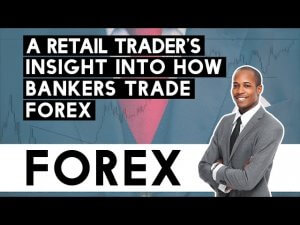Hello and welcome to this latest edition of courses on demand brought to you by Forex. Academy.
So in this course, we’ll be discussing buying and selling, and the principles of buying and selling. Now, everyone has a comprehensive understanding of the process involved in buying, of course, you buy a particular price in the expectation for that price to increase in value, and then you sell that particular asset, or whatever it may be, and you will benefit from that margin as profit.
Now, the same actually applies to selling. It’s referred to as short selling and can provide a little bit of, especially, to those that are new to trading the financial markets, it can provide a little bit of difficulty, in the kind of the principles behind short selling. So that’s what we’ll be looking to discuss over the course of this webinar.
So if we can start as we always do with our disclaimer. Please do familiarise yourself with the risks involved in trading these financial markets. If you are accessing this in the form of a recording then please do feel free to pause the recording, and do familiarise yourself with our disclaimer.
Okay, so let’s start with a webinar outline. So we’re going to introduce the principles of buying and selling. We’ll have a look at the process involved in being able to buy a market. We’ll have a buying example just to clearly define the process involved in buying that market. And then we’ll have a charting example to show you the process in which a trader would execute a Buy order in the markets, and what we would expect to happen over the course, and certainly on this webinar. And what we will do in addition is introduce the principles behind Selling, those that trade derivatives, and in particular see if these have the potential to actually sell a particular market in the expectation that prices are going to move to the downside. So we’ll explain this in some detail. We’ll have a particular example for you and we’ll finish with a charting example of looking to sell a market as well.
So let’s start with an introduction to buying and selling. So the beauty about trading derivatives and specifically CFDs, or contracts for difference, is that we as traders are able to both buy and sell a market. That’s the important part of being able to trade contracts for difference. The problem with this process is that everyone has a comprehensive understanding about the process involved in buying a market – you buy at a lower price and exit at a higher price. It’s fairly straightforward, easy to understand and comprehend, making the corresponding profit as a result.
Now the difficulty arises, as I’ve alluded to already when starting out, often comes in the form of perhaps potentially misunderstanding the process involved in potentially selling a market, or certainly the theory behind it. So when we look to sell a market, where a trader, in this particular example, would decide to potentially look to sell a particular market at a certain price, or what would be deemed as a higher price, with the expectation for prices to actually move lower. And if the market follows through and those prices do push lower, you could exit at a lower price. And what that means in that situation is you’d be able to benefit from the corresponding devaluation in that price.
So we will go through these in a lot more detail, but, just the principle of buying is when you expect prices to push higher, so you’re seeing that upward movement. Perhaps from bottom left to top right on a trading chart. And also, the process involved in selling a market is where you’re expecting prices to actually push lower. So you’re seeing prices move from top left to bottom right.
Okay so let’s get straight into the process involved in buying a market, to begin with. So buying a CFD, or contract for difference, market is when you think the market is more likely to rise than fall over the period you happen to be evaluating. So it’s where you’re doing your analysis. And whether you’re a technical trader or whether you’re a fundamental trader, or you’re trading sentiment. You’re expecting prices to move to the upside. So you are speculating on an increase in value of the instrument between now and at some point in the future. So, of course, you have that expectation for those prices to push higher. So at whatever point in time, you happen to be looking to take this market to the upside, you will expect over a certain period of time that the prices will move in one direction. And that is to the upside.
Now, of course, traders can get their assessment, they can misunderstand what’s happening in the markets, markets don’t have to necessarily follow through to any great extent. But, if it does, then you’re expected to make profit on the differential between your entry price, which could be signified at this particular level down here. So we’ve just put ENT for entry. And we’d be identifying a higher price to exit this market. So, let’s say our exit is, it happens to be up here. So EX for exit. And the process of buying simply involves the difference that you’ve paid for the particular asset or instrument or market that you happen to be trading and seeing prices increase in value. You’ll be able to profit from that differential between your entry price and your exit price.
So, relatively fairly straightforward process involved in buying that market. You’re just expecting that market to continue to push to the upside. So to just touch upon a buying example and to explain it in a slightly different way, and to just highlight a couple of let’s say technical aspects to being able to buy a market, let’s just say for example we buy the EURUSD market. You believe the EURO as a result will, therefore, strengthen versus the USD. So what you might end up doing is buying that market at $1.2000. And the quoted price that you’ll see on any particular price chart, the price that you’re seeing, is what you’re able to exchange €1 for. In exchange for, so €1, we would be able to exchange it for the quoted price on a EURUSD price chart. And the price that you’re quoted is what you will get in exchange for €1. So effectively for every €1 in this example, you will receive $1.20 in exchange for €1. So that’s just how to interpret it. And don’t misunderstand the fact that foreign exchange markets, the non-yen foreign exchange markets, are presented to the fourth decimal place. We’re still talking about realising an exchange rate for what is effectively €1. And in this example, if we see a price of $1.2000 then it’s we’re exchanging $1.20 in exchange for €1. So hopefully that makes a little bit of sense.
However, we’re looking to buy this particular market and we expect prices to push up, to move to the upside. So, if the market now moves to the upside and you start seeing a price of $1.2500, then, of course, you are in a position of profit. Because you’ve purchased the EURUSD at $1.2000, the price increases to $1.2500, and you will, therefore, benefit accordingly. So effectively your €1 which you locked in at a particular price, at the $1.2000 level, will now actually be worth, that same €1, will be worth $1.25. And it’s because that market, as you’ve anticipated, has strengthened. As a result, you profit by, as you can see, $0.05 effectively. $0.0500 are, if we talk about it in trading terms, we’ve benefited from a five hundred pip movement. So it’s to the fourth decimal place, and you can see that there’s five hundred units here at the end, and that is perceived profit.
Now it’s also important, and without the desire to confuse you, to know that if we happen to trade €1 in real terms without the use of leverage, we would make $0.05 profit on that particular trade. So although it sounds like small amounts, of course, it is a tiny, tiny amount, but effectively you’re making five percent return on your investment. So and it’s for every euro as well. So that’s what you will, that’s effectively how those that are fortunate enough to trade the market without the use of leverage, this is how they can effectively make money grow to a certain degree. So this is just the practical example of the profit that you would look to generate if you were trading without leverage.
So leverage is, unfortunately, a double-edged sword, but it’s a necessity for the vast majority of traders out there where you would actually be able to see a significant multiple of that in real terms if you were able to benefit from a five hundred pip move in that market. But if we strip away leverage and the impacts that leverage can have on your trading in your performance, then we can be left with a fairly easy to identify profit on a particular trade.
Ok, so just to continue with this buying example, however, we’ll look at it from a slightly different angle. Let us continue with the assumption that you’ve purchased the market at that $1.2000 US dollar level. Now, if the market this time fails and you get your analysis wrong and you close the trade at perhaps $1.1500, you would have been effectively realising a loss in this case. And the same thing applies this time. You have effectively lost $0.0500 in terms of a return on your investment, and this would be a five hundred pip loss from a training perspective. Now, this would mean that you would’ve effectively realised a loss of five cents on every euro that you happen to trade if this was an un-leveraged example.
So there’s obviously pros and cons to leverage. Like I said, it is, unfortunately, a double-edged sword. It’s a necessity for the vast majority of traders. However, used and applied incorrectly, then it can become a significant issue for a trader.
Okay, so let’s take a buy trade on a Metatrader 4 platform now. So for this, I’m going to get up our charting software and let’s do a little bit of analysis on this market. So we’re looking at this market. I’ll just convert this to a nice solid blue colour. So it’s a level of support resistance that we’d be looking to work with. And, let’s just finish out a little bit of support and demand. So we can see that the market is range-bound and it’s bouncing off these highs and lows. So let’s say we like the potential to buy this market around this price. And this is a live, reactive price. So let’s say we quite like this kind of setup. We’ve bounced off the 1967. We’ve seen a structural failure to the upside, and we now want to buy this particular market.
So to do this, we can effectively open up a new order. Make sure you’ve obviously you’ve done your risk management calculation so you know exactly how much risk. Let’s say, if we buy it at the current price and we’ll sell it below the 19. So I will place a stop-loss below the 1967, so let’s call it the 1965. And we’re going to just place a take profit again at the higher level. Let’s say, at the 1.2005 level. So just below this level here to the upside and we’ll place this particular order. So straight away what we’re doing is we, we’ve carried out our analysis.
I appreciate I’m getting into this market a little bit late. It would have been nice to have just got back in, getting into this market perhaps 10 pips lower. But the basic principle applies. Where a trader applies their technical analysis, they look at the charts, they identify opportunities, they make sure they control, and they manage their risk, so that stop losses is outside the level of support. And we’re looking to buy this market in the expectation that the price is likely to push up to these higher levels. In which case, we’ll be able to realise a return on that buy trade.
Equally, if the market starts to reverse, which it’s looking like it’s potentially doing now, I’m just pulling back a little bit off those highs, and if it bounces back, then we’ll start to realise a loss. Now the trade will remain intact until either our stop-loss is hit or our take profit is hit. Now, we can intervene ourselves and make sure we cancel this trade if we wish to, but what I’m going to do for the purpose of this demonstration and this recording and this video, is to leave this trade running. And we’ll refer to it very, very shortly and just see if either the price squeezes to the upside and we book in profit, or whether it actually rolls over and breaks these lows, or whether actually procrastinates between these two levels of support resistance. So, we can trade these market conditions, but this is the principle involved in buying a market. So I’m going to leave that trade running and we’ll see how we get on and we come back to our trading screen very, very shortly.
Okay, so to just introduce the principles behind selling a market now. So selling a CFD market is when you are speculating on a fall in price and volume. So this time we expect prices to push to the downside. So you’re selling, and it’s important to know when you’re trading CFDs as well, that you are selling the market without acquiring it. So there is no need to, and this is where the confusion can arise if you perceive the word selling as a very similar principle to effectively buying it. But you’re not, there’s no actual, you’re not actually acquiring the asset when you get into that market. So you’re only speculating on price movement. So this is, effectively, known as short selling. So when you hear short selling by your big institutions or your banks, then they’re referring to the potential to sell a market without the need to acquire the particular underlying asset. So this is known as short selling. So what you’re effectively doing is you agree to sell a market at a certain price in the belief or expectation that the market will fall in value at some point in the future. So if price moves in your favour you can then exit at a cheaper, or what are referred to as a lower price, which would then result in you realising a profit if you were able to benefit from that price move.
So to work you through a practical example, what we’d be looking to do in this, in this market, is let’s say we would do our analysis, and we would like to sell this market at that level. So we get into that market in the expectation for price to move to the downside. So this time we are actually getting in at this higher price in the expectation for prices to push lower. And if that’s the case, we might decide to get out at this level. So we can actually exit this sell trade at a lower price, and as a result, we’ll be able to realise this much profit in that, in that particular trade. So this is our profit margin between our entry and our exit. And just think of it as the process involved in buying, but completely upside down, so it’s a complete 180 on the process involved in buying. So, in this occasion, we look to get into the market at a price with the expectation of prices to push lower. And if they do follow through and do push lower and you exit at a lower price, then the difference between your entry and your exit is effectively your profit.
So that’s how traders work and utilise the potential to sell a particular market as well. So to take you through an example. If you sell this time the EURUSD simply because you believe the euro will weaken, so maybe there’s some news out impacting from the ECB or something like that, there’s really poor economic data so the performance of the euro is not that great, and you think right, there’s an opportunity here to sell the euro dollar because you believe the euro is going to weaken and you think that the dollar is going to strengthen as a result. But this time you sell at twenty one hundred (or $1.2100). So this time for every €1 you happen to trade, it has a converted value of $1.25. So that’s what you will receive at the point of entry if you get into this market. So, following through with this, this is the amount you will sell €1 for, just to make that crystal clear. So if the market now falls to $1.1600, you would then be, as a result, you would then realise profit on that trade. So effectively, on this occasion, your €1 to the fourth decimal place, which you actually booked in or locked in at the $1.21 level, would now be worth less than the price you booked in that market. And the reason for that is because the market weakened, so the euro dollar moved to the downside.
But this time, because you anticipated a devaluation and you clicked the Sell button instead of the Buy button because you’re expecting prices to push lower, you’ve anticipated a devaluation and you’ve shorted that particular market. You can then benefit from that lower price move so you could still profit by $0.0500 (or five cent) which in trading terms would be a fantastic performance and a 500 pip return on that trade. So this time, just look at the same principle involved in buying a market. We’re just looking at it from a slightly different perspective. We are looking to sell. That would mean you made five cent U.S. profit in this trade. Again, without the use of leverage is what we’re referring to in this particular example. So this time we’re benefiting from a devaluation in price. So looking at the process involved in selling, just from a slightly different perspective, what if this time you sold the euro dollar at the same price, at the one dollar twenty-one cent level? But, the market decided to rise so you’ve got your analysis wrong and the market rose to one dollar and twenty-six cent and you close the trade. You would have effectively, at that particular price, you would have effectively realised a loser. So this time again, similar process, you would have lost five cent (or $0.0500). So again in this particular example, that means you would have lost five cent on every euro traded, in this particular un-leveraged example. So the best thing to do is to show you this in a viable, looking at a metatrader4 platform, and, we shall also just touch upon the performance of our buy trade.
So this time we are expecting this market to move to the upside. And you can see prices are a little bit above our entry levels. It would have been nice to have got into this market at a little bit of a lower price, but what we’ll do is we shall close our buy trade. We’ll book in a little bit of profit on this particular trade. And we’ll close, so let me let me modify, let’s close this trade at that price. So we’ve actually booked in a little bit of profit on that buy trade purely because the market proceeded to push to the upside. And if it kept moving to the upside, um, we would have had a take profit at these higher levels and been able to book in a little bit more profit.
So, so now we’re looking at the principles involved in selling. So without the need to sort of confuse you to any great extent, let’s do a little bit of analysis, And we think, for whatever reason, we’re likely to run into a little bit of resistance around this level. So what we’d actually like to do now is to sell this market. So we think the prices could bounce back to the 1967 from this level, and we can work with just above the high at the 2007 level, at the place, our stop-loss. So we can keep our stop-loss out of the way and we’ll see if these prices roll to the downside.
So, so again we can place a new order. And, but we just need to make sure that we’re looking to sell a market this time. So really we’re focusing on the potential to sell by market. And so again we want to get into the routine of making sure we place our stop-loss. So we do expect the price to move lower based on our very brief analysis. And roughly around the 1993 level (or a $1.1993), that’s the price we’re currently looking to sell this market. Um, and we’re going to place our stop-loss at the 2009 level. So, $1.2009 we can place as a stop-loss. And we want to take profit just around these lower levels. So let’s say the 1971 is where we’re looking to take profit from, so $1.1971.
So just before we take this trade, we’ve done our analysis, we are looking to sell this market. We do expect this price to move to the downside, because we’re trading CFDs, we are able to look at it for opportunities to sell these markets, as well as buy them. But, it’s all important that you place your stop-loss at the $1.2009, so you’re doing it at a level that seems to make sense. And just make sure this time that you press your Sell button. So now we’re seeing that the same trade execution details up on-screen. So we have our entry price, this is the green line in the middle. This is the level that we’re getting into on a Metatrader 4 platform. And we have our target down here at the 1971. So we do want these prices to squeeze lower. And we have our stop-loss just above this recent structure up here. And we’ve protected our capital, so if the market reverses somewhat and we get that extended move to the upside, then we are absolutely able to protect ourselves accordingly.
So let’s say you know like 10, 15, 20 minutes go by and you know the market hasn’t really done an awful lot. Okay we’re pushing a little bit lower, in a little bit of profit, and we may decide to cancel this particular trade as well. So we’ll close this order, make a little bit of profit on that trade as well. And that’s a live example of looking to both buy and sell a particular market with as you can see different outcomes in mind based on your analysis.
So that just about concludes this particular webinar so we’ve covered hopefully in detail the process involved in looking to Buy a market and also the process involved in looking to Sell a particular CFD market. So all that’s left for me to do now is to thank you very much for joining us. We do look forward to seeing you next time. So from everyone here, take care, and bye for now.





